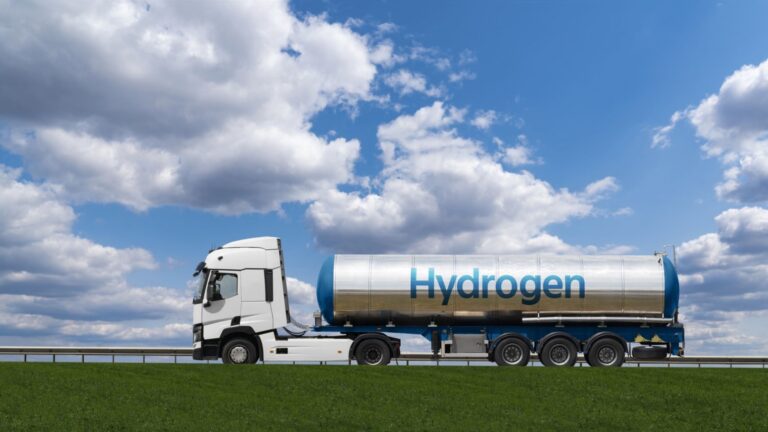
The Toyota Mirai was powered by a hydrogen fuel cell stack that generated electricity to drive an electric motor. Producing around 180 brake horsepower and with a range of 400 miles, the new vehicle was understandably the talk of the show, and Toyota were quietly confident that their new vehicle represented the future for sustainable mobility. Yet 10 years later – whilst still on sale and popular amongst its owners – Toyota has only sold 21,500 Mirais.
By comparison, the Japanese automotive giant sells 55,000 of its battery-hybrid electric (Prius) and 1m Corollas (Toyota’s most popular model) each year. The Corolla of course is a bog-standard internal combustion engine automobile.
Evidently then, hydrogen vehicles have not taken off in the way that many predicted back in 2014. This is somewhat of a head-scratcher when you consider that the science behind hydrogen power has long been understood, and the funding for this particular technology more than plentiful.
Problematic production
However, science and money have not solved the first problem associated with hydrogen and that is that the only way to currently produce it at scale is via crude oil refining and / or the steam reformation of natural gas. Both processes produce what is called “Grey Hydrogen”, which, of course, cannot be classified as an environmentally friendly energy source, irrespective of its end- use.
“Green Hydrogen” on the other hand relies on the electrolysis of water (i.e., splitting the H2 from the O) but producing this at scale is also problematic. The obvious requirement of electrolysis is electricity and, to make the hydrogen green, that electricity must come from eco-friendly generation (e.g., wind or solar).
Furthermore, the separation of hydrogen from water requires huge amounts of said electricity, which makes green hydrogen expensive ($250 – $300 per barrel of oil equivalent) and, thus, commercially unviable in the current energy market. Additionally, there is a more abstract problem with green hydrogen which is the result of today’s virtually endless demand for renewable electricity.
If you are a wind or solar generator, you can sell your electricity easily and directly into the grid, creating revenue, reducing carbon and (because of that) almost certainly benefitting from environmental subsidy. Why then add an extra leg in the chain for industrial scale electrolysis, to effectively achieve the same outcome…?
“WHY ADD AN EXTRA LEG, TO EFFECTIVELY ACHIEVE THE SAME OUTCOME?”
Distribution
The next thorny issue concerning hydrogen concerns distribution. Broadly speaking, green electricity can be plugged straight into the grid, whereas getting hydrogen to the consumer requires complex and far-reaching infrastructure. In the UK, our annual road fuel consumption of 50bn litres per annum is distributed via 6 refineries, 8 import terminals, 4 rail-loading facilities, 6,350 miles of pipelines, 30,000 petrol tankers, 8,500 forecourts and 140,000 dispensing nozzles.
To construct a conventional petrol station costs around £2m, whereas a road-side hydrogen site comes it at more like £10m (a fully electric site is circa £5m). For these reasons it is hardly surprising that there are only 7 hydrogen filling facilities in the UK, 100 in Germany (which is more than all EU countries combined) and 250 in China.
When you compare these figures to the number of bog-standard petrol stations (UK = 8,500, Germany = 14,500, China = 110,000) it begins to look naïve to think that the world will be capable of ramping up electricity networks for the mass electrification of vehicles, whilst at the same time doing the exact same thing for a universal hydrogen fuelling system.
None of this means we can or should write- off hydrogen in its entirety. After all, there are over a 1,000 major hydrogen projects currently “in-play” around the world and some of these will come good and allow hydrogen to play a role in the decarbonisation process. Heavy (i.e., energy intensive) plant and equipment, such as diggers and earth movers, lend themselves to direct hydrogen combustion (rather than hydrogen fuel cells), which is why JCB is investing heavily in this technology.
Other “closed fuelling networks” (i.e., where fuelling takes place on one site or in a limited geography) might benefit from the longer range, reduced weight and quicker refuelling times offered by hydrogen when compared to battery electric. More broadly, and with incentivisation, it is easy to see clean (green) hydrogen displacing dirty (grey) hydrogen currently in use for the likes of fertiliser manufacture, methanol for chemicals and steel making.
More tantalising still could be the use of green hydrogen from electrolysis for long- term energy storage, because whereas batteries lose charge over time, liquid hydrogen retains its energy indefinitely. And finally, maybe we will even see the return of “Town Gas” – last used in the 1960’s – where hydrogen is blended with natural gas for home heating.
This is not quite as outlandish as it sounds, for it is estimated that up to 10% of hydrogen can be “cut” into natural gas networks without any infrastructure modifications.
When it comes to automotive mobility however, there can be no conclusion other than that hydrogen has lost out heavily to battery electric technology. Of the 300m cars in the USA today, 2.53m of them are full or hybrid electric, but only 70,000 are hydrogen powered. And at the same time that Chinese cities add 1,000 electric buses every month to their networks, the total number of hydrogen buses in the whole of Europe sits at 300.
Ultimately, a lack of availability of truly green hydrogen, coupled with the innate infrastructure advantages enjoyed by green electricity from day 1 (the existence of sub-stations, transmission lines and existing connectivity into homes and businesses) probably means that this was always the inevitable outcome.
Portland
www.stabilityfromvolatility.co.uk

Image credit: Portland, iStock
